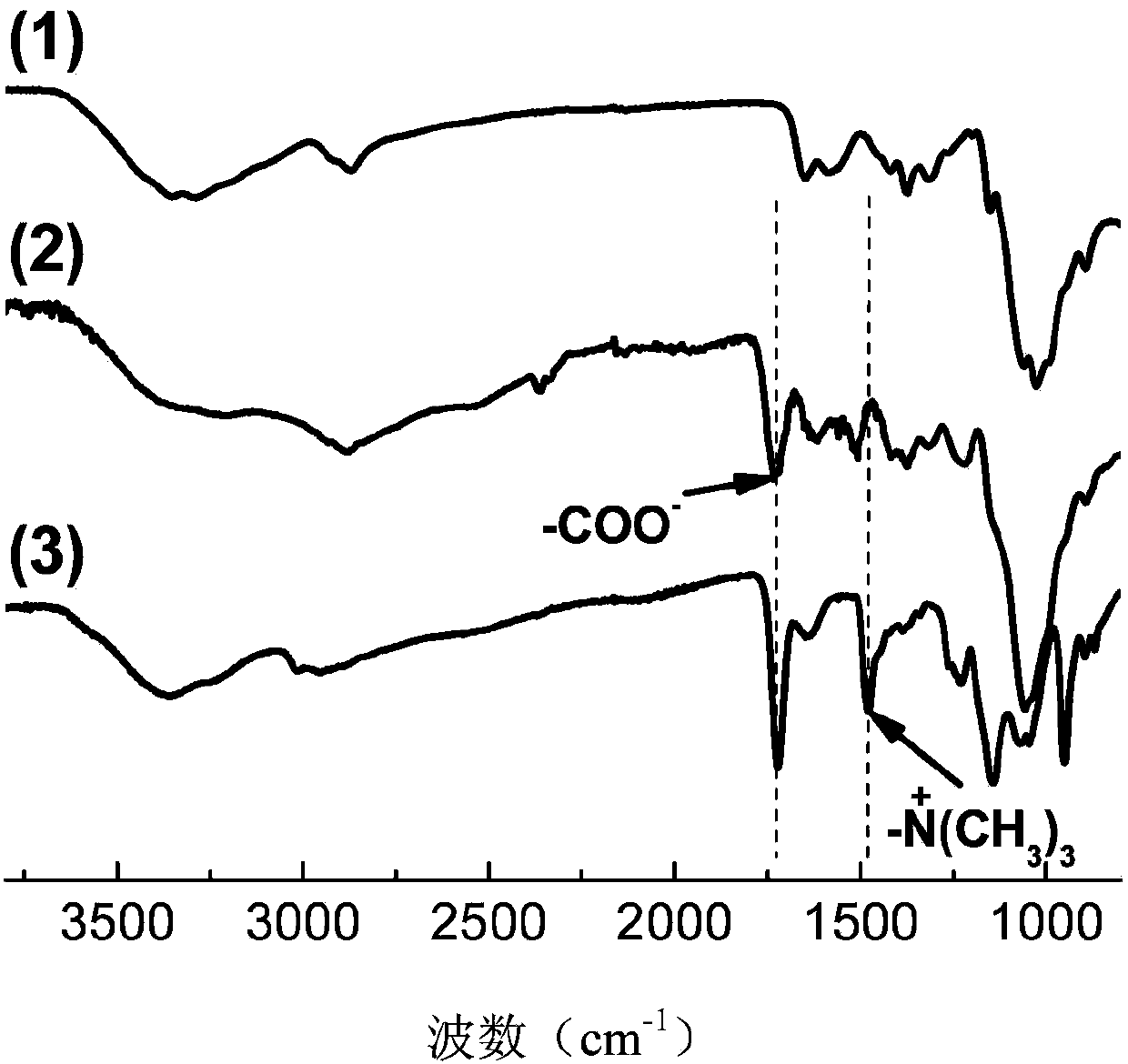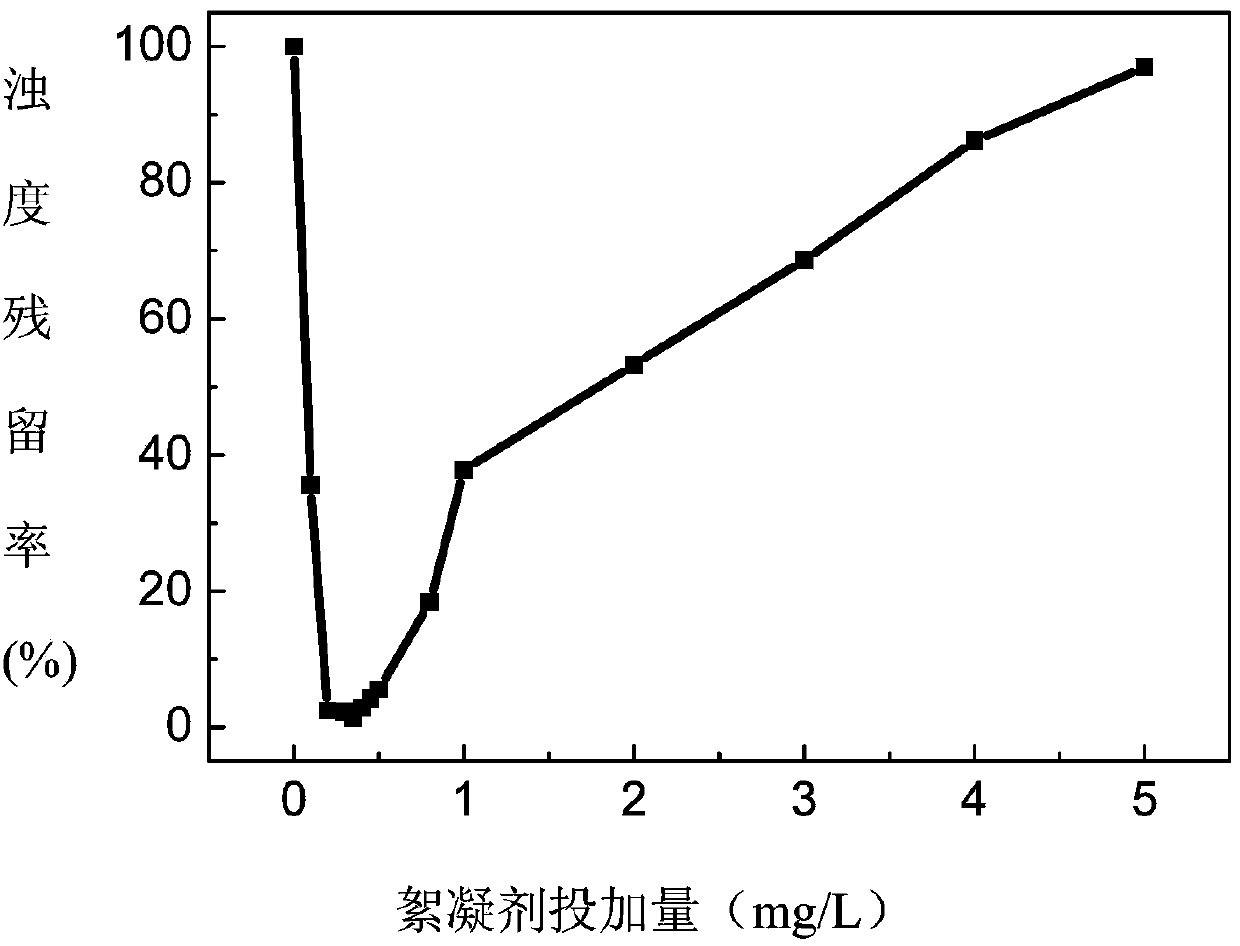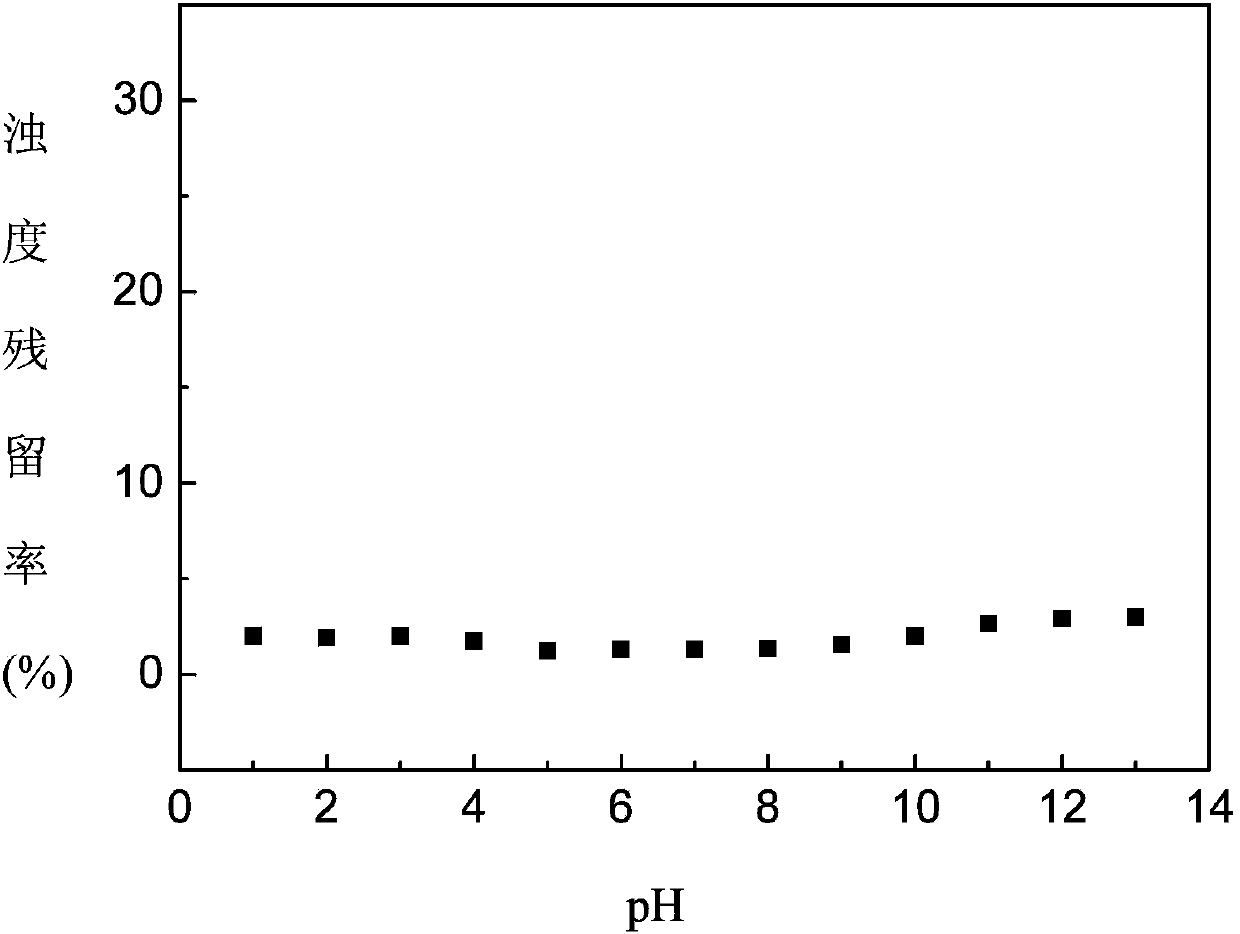Chemical bond connected strong cationic grafted amphoteric chitosan flocculant and preparation method thereof
A strong cation, chitosan technology, applied in the direction of flocculation/sedimentation water/sewage treatment, etc., can solve the problems of pH sensitivity of flocculation effect, poor solubility of chitosan, low molecular weight, etc. Simple to use effects
- Summary
- Abstract
- Description
- Claims
- Application Information
AI Technical Summary
Problems solved by technology
Method used
Image
Examples
Embodiment 1
[0037] Disperse chitosan (viscosity average molecular weight 800,000, deacetylation degree 85.2%) in 10% sodium hydroxide solution (solvent is a mixed solvent of water and isopropanol, wherein the mass ratio of water to isopropanol 1:1), alkalized for 1 hour; after that, add 50% isopropanol solution with chloroacetic acid mass percentage concentration (the mass ratio of chloroacetic acid and chitosan is 1:1), and react at 50°C for 4 hours After the reaction is completed, ethanol is used as a precipitating agent for precipitation and separation to obtain amphoteric carboxymethyl chitosan. Amphoteric carboxymethyl chitosan is dissolved in water, and it is configured into a solution with a mass percentage concentration of amphoteric carboxymethyl chitosan of 1%. After the solution is uniform, potassium persulfate is added as an initiator (addition amount is carboxymethyl chitosan 2% of the moles of chitosan units), and then add methacryloyloxyethyltrimethylammonium chloride (meth...
Embodiment 2
[0039] Disperse chitosan (viscosity average molecular weight 500,000, deacetylation degree 89.7%) in 1% potassium hydroxide solution (solvent is a mixed solvent of water and isopropanol, wherein the mass ratio of water to isopropanol 1:3), alkalized for 1.5 hours; after that, add 30% isopropanol solution of chloroacetic acid mass percentage concentration (the mass ratio of chloroacetic acid and chitosan is 2:1), and react at 60°C for 5 hours After the reaction is completed, ethanol is used as a precipitating agent for precipitation and separation to obtain amphoteric carboxymethyl chitosan. Dissolve amphoteric carboxymethyl chitosan in water, and configure a solution with a concentration of 2% of amphoteric carboxymethyl chitosan in mass percent. After the solution is uniform, add cerium ammonium nitrate as an initiator (addition amount is 3% of the moles of chitosan units), and then add methacryloyloxyethyltrimethylammonium chloride (methacryloyloxyethyltrimethylammonium chlo...
Embodiment 3
[0041] Disperse chitosan (viscosity average molecular weight 52,000, deacetylation degree 94.8%) in 15% sodium hydroxide solution (solvent is a mixed solvent of water and isopropanol, wherein the mass ratio of water to isopropanol 1:0.2), alkalized for 2 hours; after that, add isopropanol solution with chloroacetic acid mass percentage concentration of 20% (the mass ratio of chloroacetic acid and chitosan is 3:1), and react at 30°C for 1 hour After the reaction is completed, ethanol is used as a precipitating agent for precipitation and separation to obtain amphoteric carboxymethyl chitosan. Amphoteric carboxymethyl chitosan is dissolved in water, and it is configured into a solution with a mass percent concentration of amphoteric carboxymethyl chitosan of 1.5%. After the solution is uniform, ammonium persulfate is added as an initiator (addition amount is carboxymethyl chitosan 1% of the moles of chitosan units), and then add methacryloyloxyethyltrimethylammonium chloride (me...
PUM
| Property | Measurement | Unit |
|---|---|---|
| degree of deacetylation | aaaaa | aaaaa |
| degree of deacetylation | aaaaa | aaaaa |
Abstract
Description
Claims
Application Information
 Login to View More
Login to View More - R&D
- Intellectual Property
- Life Sciences
- Materials
- Tech Scout
- Unparalleled Data Quality
- Higher Quality Content
- 60% Fewer Hallucinations
Browse by: Latest US Patents, China's latest patents, Technical Efficacy Thesaurus, Application Domain, Technology Topic, Popular Technical Reports.
© 2025 PatSnap. All rights reserved.Legal|Privacy policy|Modern Slavery Act Transparency Statement|Sitemap|About US| Contact US: help@patsnap.com



